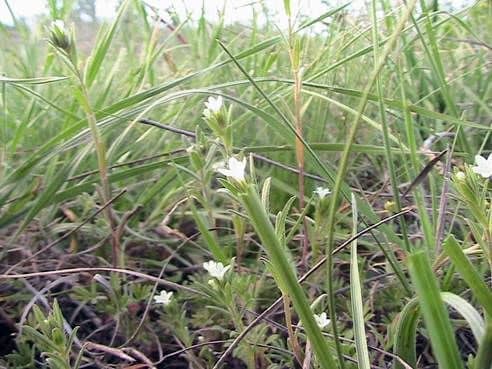Meadows of meadows and pastures

Golovaten round – Headed – a perennial herbaceous plant with a family of Compositae. Leaflets are stitching, sessile, green on top, grayish below. Flowers are tubular, bisexual, with a bluish aureole.
It grows on the fringes, slopes, pastures, bushes.
Good late honey plant. Blossoms from July to September, at a time when there are few honey-plants. Under favorable conditions, the nectar stands out rather intensely, pouring all the inflorescence. In the drought, nectar secretion decreases, but does not stop. One flower releases 1.8-2.0 mg of sugar in nectar every other day. Honey productivity of 1 hectare of continuous grass stand is 150-200 kg.
Clover white – a perennial herbaceous plant with a family of legumes. Stems ascending, bare. Leaflets elliptical, glabrous, on long cuttings. The heads are single, at the beginning of the inflorescence are spherical. Flowers white, after pollination get reddish, and then brownish color. It grows in meadows, slopes, fringes, grassy places.
Blooms from the first decade of June until late autumn. He belongs to one of the first places among other types of clover in terms of value for beekeeping. One inflorescence releases 0.70-0.80 mg of sugar in nectar a day, honey productivity of 1 hectare of grass stand is 90-100 kg.
However, the nectar stands out impermanently. The largest amount of honey bees are collected at a temperature close to 25 њ C from those massifs that grow on moderately moist and fertile soils with sufficient lime content.
Honey from clover white for taste qualities close to honey from red clover.
Belongs to the best botanical varieties. One flower produces up to 0.044 mg of pollen, 1 ha of sowing – 26-37 kg.
Dandelion is a perennial herbaceous plant with a complex color family. Leaves pinnately dissected, collected in a basal rosette. Flowering arrows are leafless, during
The baskets are large, the flowers are bright yellow, It grows on bows, pastures, in gardens, Blooms in May-June. Gives a large amount of pollen for the bees. Under particularly favorable conditions, it can give a lot of nectar, which is quickly used by bees. One inflorescence secrete 0.214-0.397 mg of sugar in nectar. Honey production of 1 hectare of continuous coating is 40-45 kg.
Rodovik medical – a perennial herbaceous plant with a family of pink flowers. Sheets odd-pinnate, with 7-17 leaves. The flowers are dark red, bisexual, collected in dense capitate inflorescences. It grows in meadows, along steep slopes, fringes. Blossoms in June – July, well visited by bees, especially at the beginning of flowering. Gives bees nectar. One plant, depending on climatic conditions, releases from 0.400 to 0.613 mg of sugar in nectar. Creates a supported honey for bees.
Sage – a perennial plant with a labiate family. The upper part of the stem, coverslips, inflorescences pubescent simple, with an admixture of glandular, hairs. Leaflets are mostly radical. Inflorescence of the collar similar. Corolla purple-blue.
It grows in meadows, pastures, steppes, lawns. Blossoms in late May – early June for 40-45 days. Kind honey plant. Together with the steppe sage, it provides sustained honey gathering, especially in the steppe part. One flower a day produces an average of 0.80 mg of sugar in nectar. Honey productivity of 1 hectare of continuous grass stand is 90-100 kg.
Salvia steppe is a perennial pubescent plant, but without glandular hairs (like sage). The leaves are reticulate-wrinkled, from the edges obtuse – dentate. Cover sheets from purple to dark purple. Corolla blue-violet. It grows more in the steppe zone, less often in the forest-steppe zone (on pastures, forest glades, on dry meadows). Blossoms in early June – in August for 36-40 days, a good honey plant.
Gives bees mostly nectar. One flower releases 1.16 mg of sugar in nectar. Honey productivity of 1 hectare of continuous herbage -120-130 kg. In places of distribution creates a good supported honey collector.
The bark cannula is a perennial herbaceous plant. Leaflets are opposite, deeply dissected. Baskets 4- 7-flowered, small, collected in a dense inflorescence. Flowers are small, white. Fruit – a box with 8-40 seeds. It grows along the banks of rivers, shrubs, forests.
Blooms in late July – August for 35-40 days. Good late honey plant. Bees willingly visit his flowers, collecting nectar and pollen. Nektarniki naskatnika can allocate a lot of nectar, placed shallow and easily accessible to bees. Neeintensivnee work bees on the flowers of the bastard from 10 to 14 hours. One flower excretes 0.48-0.56 mg of sugar in nectar, and the honey production of 1 ha of sowing is 140-150 kg.
Sulfur pernicious – a perennial herb with an erect stalk. Leaflets are the opposite. The lower ones are on long cuttings, the upper ones are sessile. Baskets make up the inflorescence. The flowers are golden yellow. It grows along the banks of rivers and lakes, on soils with a close occurrence of groundwater.
The sylphium begins to bloom in the second half of July and blossoms for 50-60 days. This is the honey of the second half of summer and the beginning of autumn. Thanks to this plant, it is possible to eliminate the mediocre period of this time. Flowers are readily visited by bees. Often it is possible to observe several bees on one basket. The flower of sylphae secretes 0.35 mg of sugar in nectar, honey production of 1 hectare of crops is 100-150 kg.
Weyda dye – a two-year herbaceous plant. In the first year it forms a rosette shoot, the second blossoms and fructifies. Leaflets are sagittate. Corolla is yellow, flowers are collected in a brush.
Blooms in May for 15-20 days. As a honey plant valuable in the south of the republic. Bees willingly visit her flowers, collecting nectar. They work more intensively from 9 to 14 hours. Honey production of 1 hectare of sowing -80-90 kg.
Meadows of meadows and pastures
